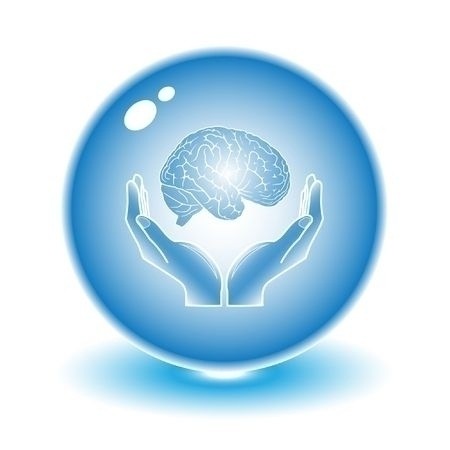Blood Interpretation
Cholesterol Cholesterol values should only be analyzed after a 12 hour fast. Further, the physician must be aware that the patient's posture prior to the blood draw is significant. If the patient has been in a recumbent posture for more than 20 minutes, cholesterol values may be up to 15% lower than normal. Cholesterol is a blood fat which is the prime building block component to make...
Blood Sugar Dysregulation / Metabolic Syndrome
General nutritional support strategies for individuals with any dysglycemic response. i.e. Metabolic Syndrome (lnsulin Resistance and Hyperinsulinemia) Type II Diabetes Reactive Hypoglycemia. NOTE: "Type 1 Diabetes" see Autoimmune Section
Cardiovascular Disease
Definitions of Cardiovascular Disease Risk Factors Total cholesterol Cholesterol is a waxy fat like substance. Total cholesterol refers to the sum of the different sub-fractions of cholesterol that are measured in the blood. Total cholesterol is an independent risk factor for cardiovascular disease. The National Cholesterol Education Program says 240 is considered high. A person with this level...
Depression
Depression is a major problem in the United States. Nearly 15 million Americans will suffer true clinical depression each year. Depression is also a big business for drug companies, especially for the maker of Prozac-Eli Lilly and Company. The good news is that there are natural measures to deal with depression that are both safer and more effective.
Ear Dysfunction - Meniere's Syndrome / Tinnitus
The disease was first diagnosed in 1861 by Prosper Meniere. Meniere's syndrome is an illness that afflicts more than seven million Americans, according to the Journal of American Medical Association (July 25, 1990). It is generally believed to be caused by a buildup of fluid in the inner ear. The resulting pressure can manifest the following list of symptoms: ringing or buzzing in the ears...
Eye Conditions
Cataracts Cataracts are clumps of protein that collect on the lens of an eye and interfere with vision. Normally, light passes through the lens (the clear tissue behind the pupil) and focuses on the retina. The retina is the light-sensitive layer of the eye that sends visual signals to the brain. A cataract occurs when the normally clear lens becomes cloudy. Most cataracts develop slowly...
Female Conditions
Amenorrhea Absence of menstruation. Amenorrhea may be primary (the girl has never begun her periods) or secondary (the woman had her periods once and then stopped having them). Physiologic amenorrhea is the lack of menses before menarche, during pregnancy and early lactation, and after menopause (all considered normal). All other causes of amenorrhea are pathologic. Causes of Primary...
Fertility / Sexual Dysfunction - Male and Female
10-15% of couples experience the inability to conceive, and the percentage is growing. Men account for 40% of failures to conceive. Of the women who are responsible, failure to ovulate accounts for 30% of infertility problems; pelvic factors (such as tubal disease and endometriosis) account for 50%; cervical pathology is responsible 10% of the time; and in 10-20% of the women no reason is...
Fingernails
Disorders That Show Up in the Nails Nail changes may signify a number of disorders elsewhere in the body. These changes may indicate illness even before the rest of the body does. The following nutritional/health problems can be indicated by the following:
Headache: Nonvascular
Headache without vascular cause. The most commonly diagnosed condition in the United States with 70% of these caused by muscle tension. Causes include suboccipital muscle spasms from injury (whiplash), postural strain (caused, for example, by a computer screen angled incorrectly), pillow too large that forces flexion of the neck during rest. Usually gradual onset, but tends to persist in cyclical...
Hepatitis
Inflammation of the liver characterized by patchy or generalized hepatocellular necrosis There are 4 major kinds of hepatitis: type A, type B, type D, and type non-A, non-B. The disease is viral in origin and although types A, B, and D can be distinguished by their antigenic properties, all four display a clinically similar picture. Other less common infective causes of hepatitis include...
Macular Degeneration
Macular degeneration is a painless, degenerative eye disease that affects more than 10 million Americans. It is the leading cause of legal blindness in persons over the age of 55 in the United States. While complete blindness does not occur in most people with the disorder, macular degeneration often interferes with reading, driving, or performing other daily activities. There are two forms of...
Memory Loss / Cognitive Function Decline
Persons over 65 years old now comprise 12-15% of the U.S. population. Memory loss is one of the most common symptoms
Neurological Conditions
Neurological Conditions The Interplay of Neurotransmitters & Mental States The body is the theater for emotional and cognitive states. Whether mood or mental issues express themselves through behavior or physical functioning-neurotransmitters are one group of characters at play. Memory and cognitive processes are heavily dependent on acetylcholine, a neurotransmitter...
Osteoporosis
A decreased density of bone compared to normal bone mass of age and sex matched controls. It is the most prevalent bone disease in the world. There are many factors that can contribute to osteoporosis, the most common is postmenopausal, estrogen deficient osteoporosis. More than one-half of women in the United States who are 50 years of age or older will have documented osteoporosis,...
Parkinson's Disease
A chronic progressive CNS disorder characterized by slowness of purposeful movement, resting tremors, and muscle rigidity. Also called "Parkinsonism" and "Paralysis Agitans" Dorland's Medical Dictionary describes the Parkinsonian complex as "neurologic disorders characterized by hypokinesia, tremors and muscular rigidity. It typically occurs late in life,...
Periodontal Disease
Gingivitis, Periodontitis, and Scorbutic Gums Periodontal disease is a scourge on our society. It accounts for more lost teeth in adulthood than any other dental problem. Gum disease will affect nine out of ten Americans, and one out of every four persons will lose all their teeth to periodontal disease by age 60. Thirty-two million Americans have gum disease right now in such an advanced state...
Polymyalgia Rheumatica
What is polymyalgia rheumatica? Polymyalgia rheumatica (pronounced pah-lee-my-al-jah room-at-i-ca) is a type of arthritis that affects the muscles. It does not affect the bones, or the joints, which are the spots where two bones come together. It causes muscles to become stiff, tender and very sore. This is called inflammation. Even though the muscles are sore they do not become weak.
Prostatitis (Prostatic Hypertrophy, Benign)
Pathology A common entity which occurs in about four out of every five men in America over the age of 50 years. It is characterized by the growth of multiple fibroadenomatous nodules enlarging the prostate gland and compromising the urethra causing variable degrees of bladder outlet obstruction.
Skin Conditions
Acne Vulgaris An inflammatory disease most commonly seen in teenagers. It affects areas where sebaceous glands are largest, most numerous, and most active. Mild cases consisting of few residual signs except possibly dilated pores, and the development of the comedo, or blackhead, may progress through more pathological stages of ruptured sebaceous ducts, pustule formation,...
Stress
The many faces of stress Stress manifests differently depending on the individual, influencing many biological processes that begin in the brain and spread through nearly all body systems - including the adrenals, thyroid, neurotransmitter systems, digestive system, and heart. Consistent stress over long periods of time can become a serious threat to maintaining lifelong wellness as so much energy...
Hypothyroidism
Hypothyroidism occurs when your thyroid gland, at the front of your neck, doesn't produce enough thyroid hormone or when your body fails to use thyroid hormone efficiently. There are several types of hypothyroidism. The most common is Hashimoto's thyroiditis, an autoimmune disease in which the body attacks the thyroid gland. The disease affects both sexes and all ages, but is most...






